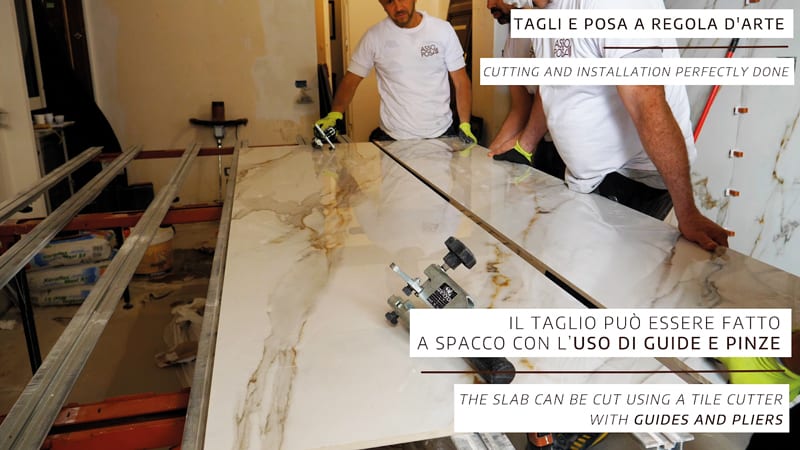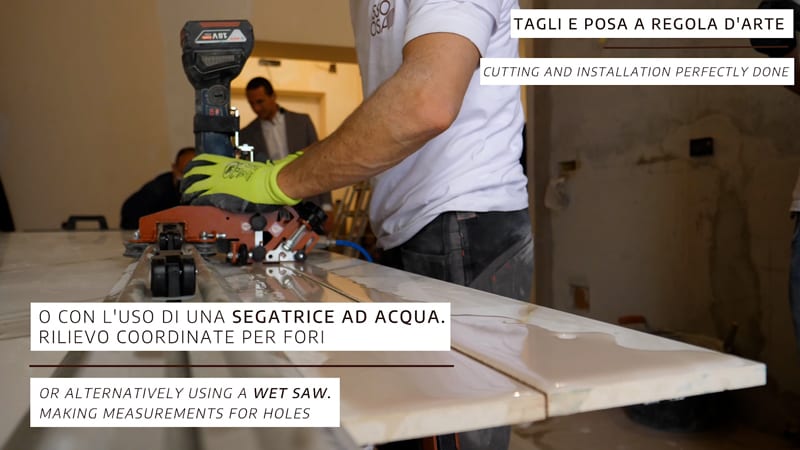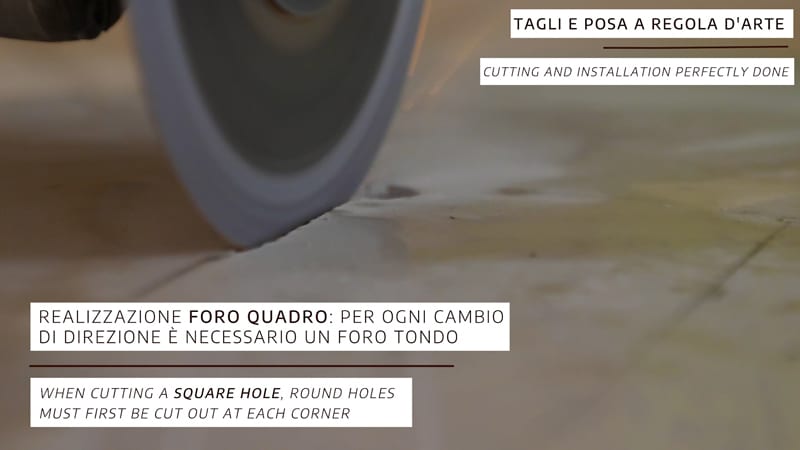Technical


Installation of large ceramic slabs | by Simone Ricci
Annual ceramic tile production in Italy amounts to approximately 400 million square metres, more than 80% of which is produced in the Sassuolo ceramic district in the province of Modena. One third of these are large-size tiles, in other words tiles with side lengths greater than 60 cm. Today’s top-of-the-range hi-tech products consist of ceramic tiles or slabs measuring up to 120×360 cm or 160×320 cm and with thicknesses ranging from 3 mm to 20 mm, a product category that is gaining ever-greater shares of all the world’s major markets.

Adequate training is essential for the installation of these innovative products as they are very different from traditional tiles and require the use of special equipment and procedures. In Italy, the national tile layers’ association Assoposa organises training courses for XXL slab layers, i.e. professional tile layers specialising in the installation of large ceramic slabs and panels.

When preparing to install large indoor slabs, it is essential to start out with a thorough inspection of the site to check the project data and above all to prepare the necessary working spaces. Collaboration between the architect, the tile layer and the site manager is essential. The overall dimensions of the slabs must be taken into consideration, particularly if the building site is located in an old town centre or for example on the mezzanine floor of a building.
Ceramic slabs leave the factory packed in special wooden crates, which must subsequently be unloaded using special cranes or lift trucks equipped with long forks.
After opening the crate and checking the integrity and suitability of the product, the next step is to proceed with handling. An 11 mm thick slab weighs about 80 kg and must be transported by several people using a special trolley and then transferred to the relevant floor using a frame with suction cups.
An adequate logistical space must also be prepared in the area where the slabs are to be installed. Then, after drawing up the installation layout, the slabs need to be cut.
 This can be done using a tile cutter with guides and pliers or a water-cooled tile saw. To cut circular holes for plumbing, diamond hole saws of various diameters are used, whereas to cut a square hole for electrical systems, round holes must first be cut out at each corner.
This can be done using a tile cutter with guides and pliers or a water-cooled tile saw. To cut circular holes for plumbing, diamond hole saws of various diameters are used, whereas to cut a square hole for electrical systems, round holes must first be cut out at each corner.
When installing the slab, adhesive is applied to both the substrate and the back of the slab to ensure perfect contact without air gaps. Once the slab is positioned, a tile vibrator is used to facilitate the release of trapped air.
Levelling spacers are then inserted (the minimum joint required by standards is 2 mm) and must be left in place for about 24 hours before being removed to allow the adhesive to dry completely. The final step is grouting and cleaning of the surfaces.
Large slabs are also ideal for use as kitchen countertops and islands, in which case the slab is cut at 45° using special devices. Paper tape is then used to ensure perfect alignment of the individual sections.
Ceramic tile can be used to cover any surface and create an elegant, durable, healthy and safe environment. Large slabs are suitable for countless different applications, from external building façades to indoor and outdoor floors in residential and commercial spaces.
Ceramic tile is a long-lasting and indestructible product provided it is installed by a skilled and adequately qualified professional.



